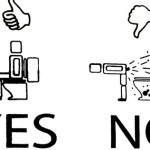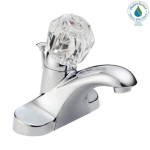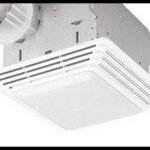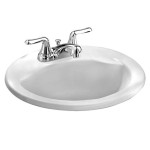```html
How To Replace a Loose Bathroom Tile
A loose bathroom tile is a common household issue that, if left unattended, can lead to more significant problems such as water damage and mold growth. Replacing a loose tile is a manageable DIY task, saving homeowners the cost of professional repair services. This article provides a comprehensive guide on how to effectively and safely replace a loose bathroom tile, ensuring a long-lasting and aesthetically pleasing result.
Key Point 1: Preparation and Gathering Materials
The success of any DIY project lies in careful preparation. Before commencing the tile replacement, it is crucial to gather all necessary materials and tools. This proactive approach minimizes disruptions and ensures a smooth workflow.
The required materials include:
- Replacement tile: It is imperative to acquire a replacement tile that matches the existing ones in size, color, and texture. Purchasing a few extra tiles is prudent in case of future damage or breakage.
- Grout: Select a grout that matches the existing grout color. Both sanded and unsanded grout are available, and the choice depends on the grout line width. Sanded grout is typically used for wider grout lines (1/8 inch or greater), while unsanded grout is suitable for narrower lines.
- Thin-set mortar: This adhesive is used to bond the tile to the subfloor. Choose a high-quality thin-set mortar suitable for bathroom applications, considering its water resistance and bonding strength.
- Grout sealer: Applying a grout sealer after the grout has cured helps protect it from stains and water damage, extending its lifespan.
Essential tools for the project include:
- Safety glasses: Protects the eyes from debris and dust.
- Gloves: Protects the hands from chemicals and sharp objects.
- Utility knife: Used for scoring grout.
- Grout removal tool: A specialized tool designed to remove grout without damaging the surrounding tiles. An oscillating multi-tool with a grout removal attachment can also be used.
- Hammer: Used to tap the chisel or scraper during tile removal.
- Chisel or scraper: Aids in removing the old tile without damaging the surrounding tiles or the subfloor.
- Small bucket: For mixing the thin-set mortar.
- Mixing stick: Used to thoroughly mix the thin-set mortar.
- Notched trowel: Used to apply the thin-set mortar evenly to the subfloor, ensuring proper tile adhesion.
- Sponge: Used to clean excess mortar and grout from the tile surface.
- Clean cloths or paper towels: For wiping surfaces and cleaning tools.
- Grout float: Used to apply grout into the grout lines.
Having all these items readily available will streamline the tile replacement process and minimize potential delays.
Key Point 2: Removing the Old Tile and Preparing the Surface
The careful removal of the old tile and meticulous preparation of the underlying surface are critical steps for ensuring the successful adhesion of the new tile. Rushing this process can compromise the integrity of the repair and lead to future issues.
The removal process involves the following steps:
- Grout Removal: Use a utility knife to score the grout lines around the loose tile. This helps to weaken the grout and prevent chipping of adjacent tiles during removal. Subsequently, utilize a grout removal tool or an oscillating multi-tool with a grout removal attachment to carefully remove the grout surrounding the tile. Exercise caution to avoid damaging the neighboring tiles.
- Tile Removal: Wearing safety glasses and gloves, carefully position a chisel or scraper at the edge of the loose tile. Gently tap the chisel with a hammer to loosen the tile from the subfloor. Work around the perimeter of the tile, gradually freeing it from the adhesive. If the tile is particularly stubborn, a heat gun can be used to soften the adhesive. Be extremely cautious when using a heat gun as excessive heat can damage surrounding materials.
- Surface Preparation: Once the tile is removed, thoroughly clean the exposed subfloor. Remove any remaining thin-set mortar, debris, or dust. A putty knife or scraper can be used to remove hardened adhesive. Ensure the surface is clean, dry, and level. If there are significant imperfections or damage to the subfloor, it may be necessary to repair or level the surface with a patching compound before proceeding.
Proper surface preparation ensures a strong bond between the new tile and the subfloor, contributing to the longevity of the repair.
Key Point 3: Applying Thin-Set Mortar, Setting the Tile, and Grouting
The application of thin-set mortar, precise tile placement, and proper grouting are the final stages of the tile replacement process. These steps require careful attention to detail to achieve a professional-looking and durable finish.
The steps involved are as follows:
- Mixing Thin-Set Mortar: In a small bucket, mix the thin-set mortar according to the manufacturer's instructions. Add water gradually while stirring continuously with a mixing stick until a smooth, peanut butter-like consistency is achieved. Allow the mortar to slake (rest) for the recommended time, as specified on the packaging. This allows the polymers in the mortar to activate fully, enhancing its bonding properties.
- Applying Thin-Set Mortar: Using a notched trowel, apply a layer of thin-set mortar to the prepared subfloor. Hold the trowel at a 45-degree angle and create uniform ridges in the mortar. The depth of the ridges should correspond to the size of the tile and the manufacturer's recommendations. Avoid applying too much mortar, as this can cause the tile to sit unevenly.
- Setting the Tile: Carefully position the replacement tile onto the thin-set mortar, aligning it with the surrounding tiles. Gently press down on the tile to ensure it is firmly embedded in the mortar. Use tile spacers to maintain consistent grout lines and prevent movement during the drying process.
- Curing Time: Allow the thin-set mortar to cure completely, following the manufacturer's recommended drying time (typically 24-48 hours). Avoid walking on or disturbing the tile during this period.
- Mixing Grout: In a separate bucket, mix the grout according to the manufacturer's instructions, adding water gradually until a smooth, consistent paste is formed.
- Applying Grout: Using a grout float, apply the grout to the grout lines, pressing it firmly into the spaces between the tiles. Work diagonally across the tile surface to ensure the grout fills all the joints completely.
- Removing Excess Grout: After applying the grout, use a damp sponge to wipe away excess grout from the tile surface. Rinse the sponge frequently and avoid using excessive water, as this can weaken the grout.
- Cleaning and Polishing: Allow the grout to dry slightly (usually 15-30 minutes) and then use a clean, dry cloth to polish the tile surface and remove any remaining grout residue.
- Curing Time: Allow the grout to cure completely, following the manufacturer's recommended curing time (typically 24-72 hours).
- Sealing Grout: Once the grout has fully cured, apply a grout sealer to protect it from stains and water damage. Follow the manufacturer's instructions for application and drying time.
By meticulously following these steps, homeowners can successfully replace a loose bathroom tile, restoring the aesthetic appeal and functionality of their bathroom while preventing potential water damage.
```
How To Fix Loose Hollow Tile Floors Don T Remove Or Replace Just Drill Fill

How Do I Repair Tile In A Shower Ceramic

How To Repair Tile Falls Off Shower Wall Ceramic D I Y

Preparing Walls For Tiling Removing Old Tiles Bathroom Guru
.png?strip=all)
How To Fix Loose Or Broken Ceramic Floor Tiles

Repair Fallen Tile Reinstall Shower With Simple Fix Re Install Bath No Grout

How To Fix A Loose Tile In The Bathroom

How To Remove Replace One Bathroom Tile Ceramic Repair

How To Repair Ed Tiles Remove And Replace

How To Replace Bathroom Tiles That Have Fallen Off
Related Posts







